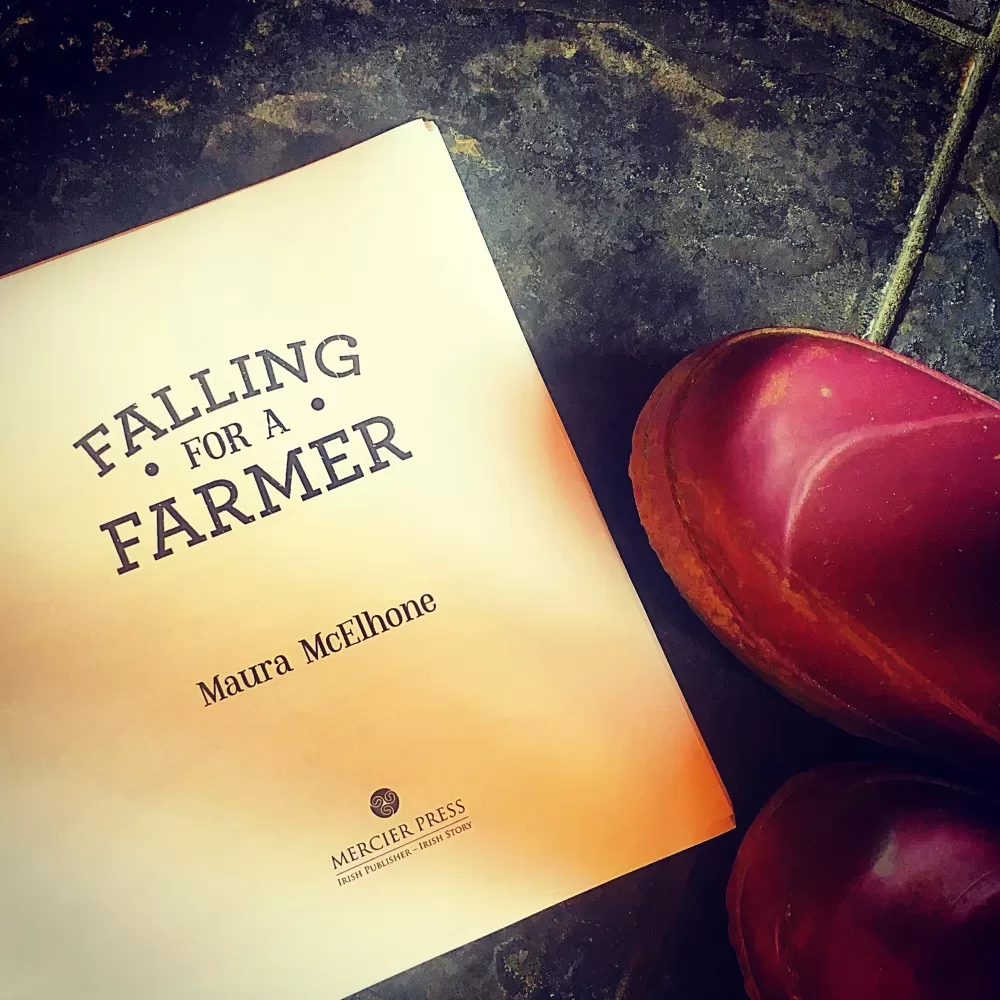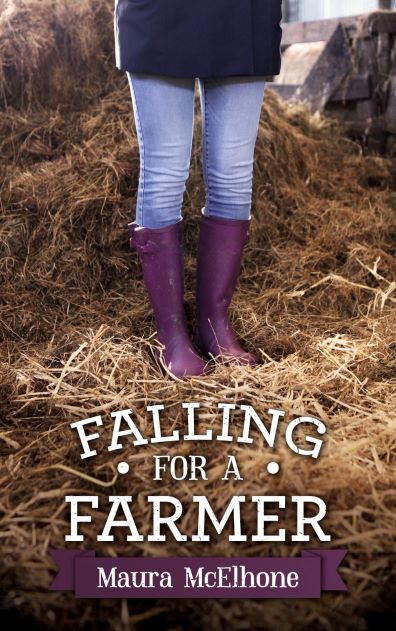The following is an excerpt from Irish writer Maura McElhone’s book Falling for a Farmer (2018), published by Mercier Press.
*
It was, if you’ll excuse the terrible pun, the tail end of calving season, a term that I’ll admit was alien to me before meeting Jack. When he introduced me to the phrase, powered by innocence and naiveté, my mind simply conjured up images of adorable baby animals taking their first wobbly steps in this world. I knew nothing of the late nights, broken sleep, early mornings and fraught nerves that accompany this season. Nor the fact that mastitis, ‘sliming’ and where one might get their hands on more beastings become common topics of conversation around the dinner table.
On that particular Saturday, Jack was tasked with monitoring the one or two heifers that were due to calf. His father had advised him that one of the animals had looked to be on her way already and, as we drove the short distance from the GAA club to the farm, Jack was hoping that in his absence, nature would have run its course and that a healthy calf would be waiting for us on arrival.
We arrived at the house and I set about making tea. As I waited for the kettle to boil, I looked out the window at the cattle in the paddock behind the house. Jack joined me after a moment and right away noticed a cow in difficulty in the far corner of the field. To my untrained eye, she simply appeared restless – laying down, then getting to her feet again moments later, where she would pace back and forth across the grass, although, granted, she was making hard work of the pacing. She was one of the two heifers his father had mentioned and Jack had done the mental calculations: if she had been showing signs of being in labour when his father left earlier that morning, the calf should already be here, if not well on its way. Something was wrong. The field was long, so, for expediency’s sake, Jack suggested that we hop on the quad bike to take a closer look.
How exciting! I thought, picturing a sort of Top Gun gone country in my head – images of a romantic journey across sun kissed fields, the wind in my hair, my handsome leading man with his foot down, guiding this bovine rescue mission.
Jack brought the bike round the back of the house and patted the leather seat, my invitation to hop on. I glanced at my white jeans and eyed the muddied machine dubiously. Not wanting to keep the expectant mother waiting, I got on – not with any kind of elegance, mind you, but I told myself that this would come in time. I wrapped my arms around Jack’s waist, like I’d seen passengers on motorbikes do, and, of course, the blonde heroine in the aforementioned Top Gun. We took off. Take my breath away is right! No sooner had we hit our first divot than I realised I had been picturing the wrong Tom Cruise movie altogether. Mission Impossible was far more appropriate, with the mission in question being that of ever getting me onto the back of a quad bike again. I felt every lump, bump and slope going, and I’m not convinced that I wasn’t airborne at least once. However, we made it safely down the field.
I didn’t know what exactly I was looking at when we arrived around the backside of the cow – some kind of filmy, purpley grey balloon – but I knew enough to suspect that the calf ’s arrival was likely imminent. Jack, however, reckoned she’d been labouring too long, and that a helping hand, literally, would be necessary. We needed to get her out of the paddock and across the road to the yard, where, Jack informed me, a calving gate would allow him to safely assist the creature. Steering the quad bike alongside and around behind the heifer like a cowboy on a cattle drive, Jack got the creature moving. And so it was off to the yard for the expectant mother, with Kildare’s answer to Tom Cruise and his less than happy co-star rumbling along behind her.
Once the animal had passed through the gate into the yard, Jack parked the quad, cut the engine and hopped off. This being my first time in very close proximity to a cow, I was quite taken aback by its size – so much so that I opted to keep my distance, remaining on the bike while Jack followed the creature into the yard, waving his arms and making strange sounds that I gathered were meant to encourage her into the small pen to the right of the sheep shed. It worked, but I didn’t make my way over until the animal was inside and the calving gate closed along her left side. The cage-like structure meant she was safely confined, allowing Jack to work away in a controlled environment without worry of her breaking free or making any sudden, dangerous movements. The cow faced away from me, her head between two long metal bars.
Ignoring Jack’s warning that ‘it’s pretty messy’, I positioned myself at the action end. I found my phone’s camera function and pointed it squarely at the animal’s behind, eager to capture the special moments for the benefit of those back home. I couldn’t help but notice that despite being in the throes of a difficult labour, the cow never made a sound. Not even when Jack rolled up his sleeve and thrust his arm elbow-deep inside her rear end. Indeed, the only hint that anything remotely untoward was going on, was an occasional widening of the eyes. And not just the cow’s.
I wonder if it’s perhaps more a curse than a blessing that we humans are, by our own definition, ‘superior’ to other animals in having the ability to think, to dwell upon, to worry and to fret. When it comes to their life’s journey, animals do all of the same things that we do: they are born, they mate, some reproduce and they die. But there’s so much less complexity with animals. They act on instinct, obeying their natural urges and desires without question, hesitation or deliberation. Rather than this cow’s composure being the result of her having a particularly high threshold for pain, I wondered if it was more to do with the animal’s innate, complete acceptance of and engagement in the present moment. Either that, or this cow subscribed to the church of Scientology, where silent births are all the rage, apparently.
When Jack rang his brother, who had just arrived back at the house following the match, and asked for his help in ‘pulling’ the calf, I hadn’t realised how literal an expression that was. My education came when Shane arrived, knotted rope in hand. Between the ropes, the rather frightening contraption known as a ‘calving jack’ and the sheer force that is required, this was less an exercise in watching in wonder and awe as nature ran its course, and more one of watching in wonder and awe at this display of bovine fortitude and stoicism, as well as the sheer brute strength on the part of the humans involved. I looked on, almost afraid to breathe, as the siblings worked together to loop the rope around the little yellow hooves that had now emerged, one brother pulling down while the other cranked the jack against the cow’s rear end, applying the pressure needed to bring this little calf into the light of day. Eventually, the calf emerged, sliding into the world and onto the ground with a squelch and a resounding plop. I couldn’t help myself: I applauded. After all the tension, the tests of strength, it was here! But to celebrate like this was, as it turned out, a rookie mistake.
‘It might be dead,’ said Shane matter-of-factly. That the creature might be dead on arrival hadn’t occurred to me. Calving season was about new life on the farm, after all. For the first bovine birth I witnessed to end in death would be horrible luck, to say the very least. Jack’s brother ran his hands over the baby’s muzzle to clear the animal’s airways, freeing its nose and mouth of mucus. Then he reached into the bucket by his feet and splashed some cold water in the calf ’s ears. With a shake of the head and some spluttering, the little creature came around. At this point, I felt it was safe to celebrate, but still, I kept quiet, not wanting to embarrass myself further. Jack freed the mother from the pen and, with the calf not yet on its feet, his brother took its forelegs firmly in his hands and dragged it around so that mother and son could meet. Immediately, and as if she hadn’t just been through the rigours of birth, the cow went to work, licking the calf with such vigour that in no time at all the baby was making moves to stand.
I found myself swallowing down a lump in my throat. I wasn’t quite sure what to make of it all. I’d just witnessed my first live birth: over within minutes and resulting in a new life on the farm. It was messy – I’d been in closer proximity to more bovine bodily fluids than I cared to imagine – it was smelly, it was rough and it was all in a day’s work for Jack. But, for me, it was something truly special that I felt fortunate to witness. It was my first glimpse at the magic of the farming life.
You can find more information about Falling for a Farmer here.
Learn more about Maura on the Contributors page.
You can also find more books from indie publishers from The Largest List of Independent Book Publishers.
Looking specifically for more books involving agriculture? Check out The Largest List of Farm Books.
- At the Tail End of Calving, by Maura McElhone - September 17, 2020


